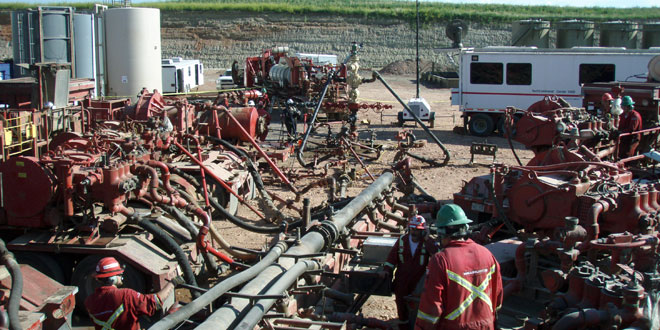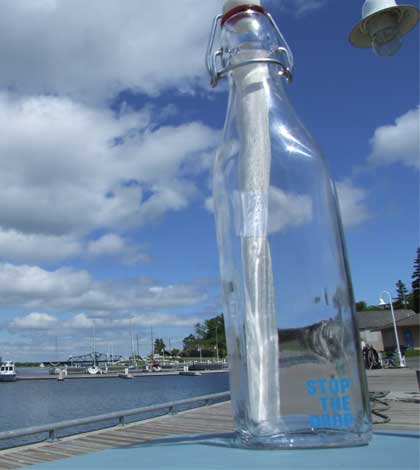MANITOULIN—Concerns over the possibility of the controversial oil and gas extraction technology known as fracking taking place on Manitoulin Island have been heating up with the revelation in the fall edition of the Council of Canadians magazine Canadian Perspectives that the Ontario Geological Survey (OGS) drilled test holes near Little Current in 2012.
The information that drilling was conducted was ‘buried’ in the OGS publication ‘Summary of Field Work and Other Activities for 2012, Section 29 on the Potential Ordovician Shale Gas Units in Southern Ontario’ and revealed in an online blog by the Council of Canadians’ water campaigner Emma Lui, who also wrote the magazine article. The OGS is part of the Ministry of Ministry of Northern Development and Mines.
“To be honest, I don’t really understand how it all relates,” said Ms. Lui of the drilling program and its results. “But the concern is that a number of things started about three years ago that has seen public money going into this exploration work before any kind of public discussion has taken place with the people of Ontario.”
Geologist Sean O’Hare of Little Current does understand the reports Ms. Lui is referring to, however, and did a little preliminary drilling through them on this writer’s behalf. “These drill data are very preliminary,” he said after reading through the documents. “From an exploration point of view there is good potential.” Good enough to indicate that, from an exploration geologist’s point of view, there should be followup drilling. Mr. O’Hare said it would be interesting to see what is found going forward, but emphasized that the data in the report is very preliminary. “They have identified that the hydrocarbon bearing units with elevated gas content and total organic carbon (TOC) are present in Manitoulin,” he wrote. “Well, in Little Current anyway.”
The OGS drilling was conducted as part of an assessment process to determine the economic potential of oil and gas reserves trapped within three geological formations, the Blue Mountain, Cobourg and Georgian Bay, which make up the Ordovician shales.
The alarm for Ms. Lui was contained in the assessment that the Rouge River member of the Blue Mountain Formation and the Collingwood member of the Cobourg Formation are listed in the report as having “the best potential for shale gas productive units.”
“Now is certainly the time to do studies,” noted Ms. Lui, “before applications are put forward. The provincial government has committed to doing the research.”
Ms. Lui said she is concerned that she has not been able, as yet, to determine how much money had been put into the drilling program. “Maybe that is something a journalist could dig out,” she said.
Ms. Lui noted that the provincial government has committed to reviewing the rules governing fracking in Ontario as recently as this past January. As yet no fracking is taking place in Ontario.
The province has apparently recognized that there are considerable concerns related to the chemicals used in the process and the fact that those chemicals are currently exempted from the province’s waste regulations.
A number of provinces and states have placed a moratorium on the practice of fracking and there have been a number of violent clashes between opponents of the practice and the police forces that have been enforcing access to traditional territories for companies conducting fracking in New Brunswick. Concerns over the pollution of the water table lie at the centre of the protests and blockades and the passionate reaction of local residents to the practice.





